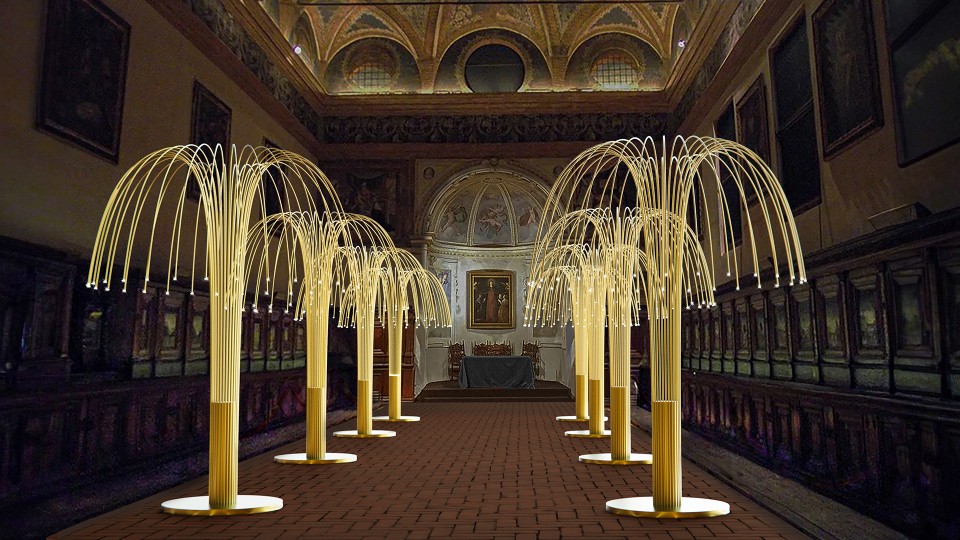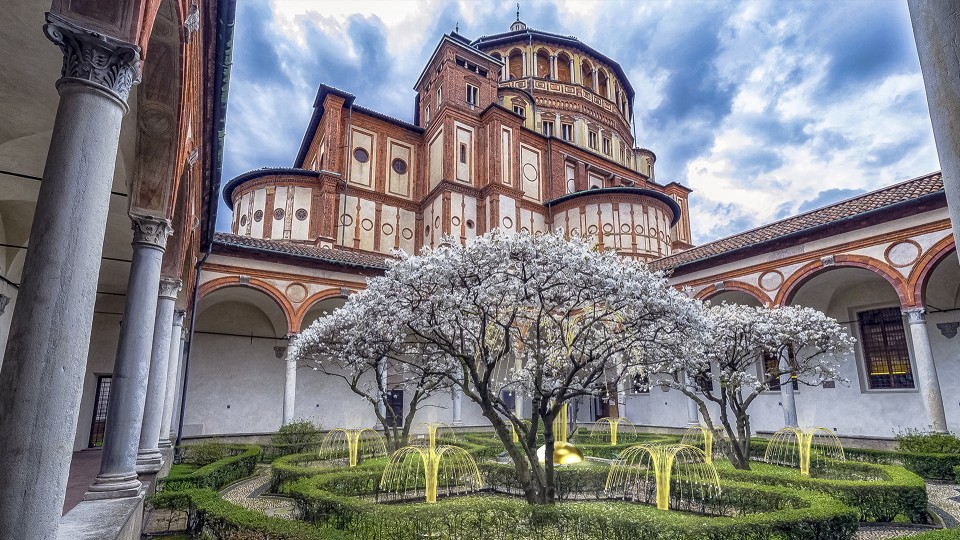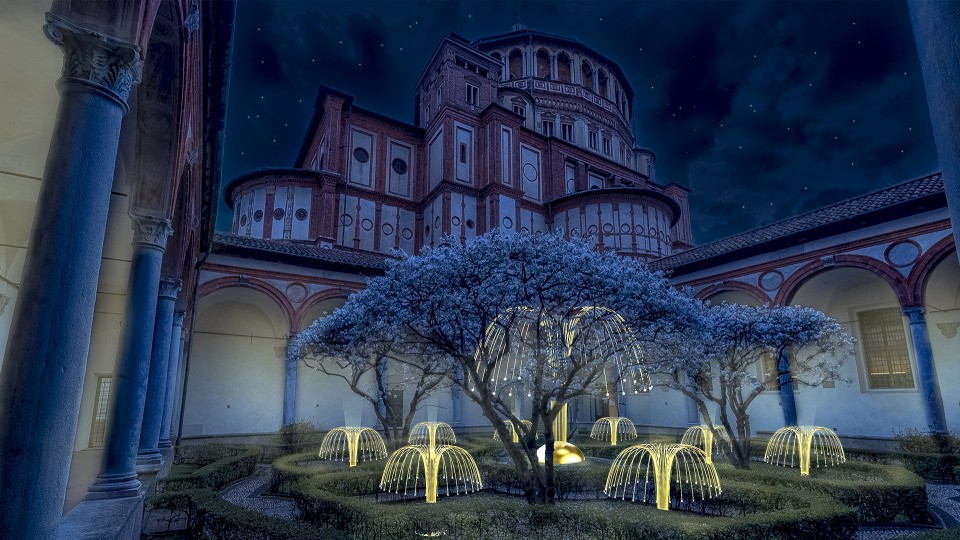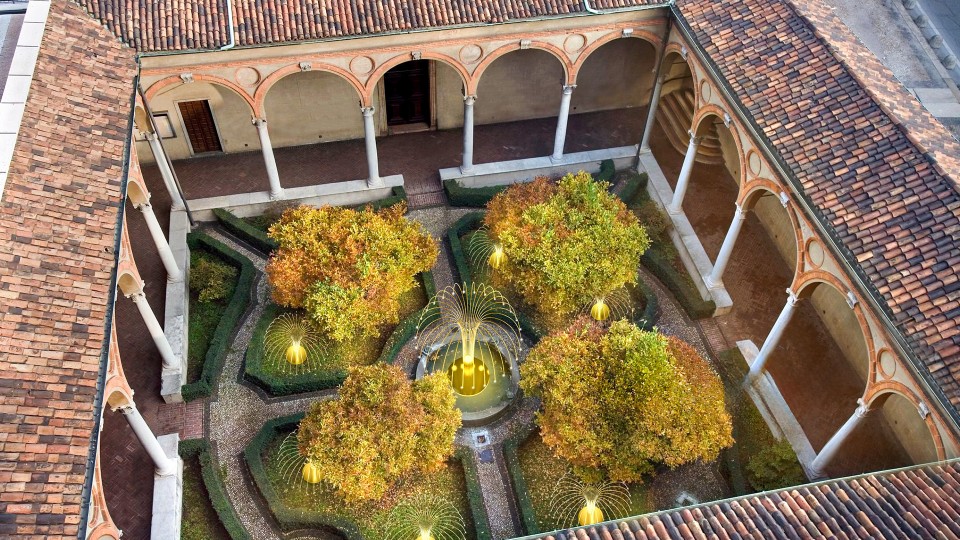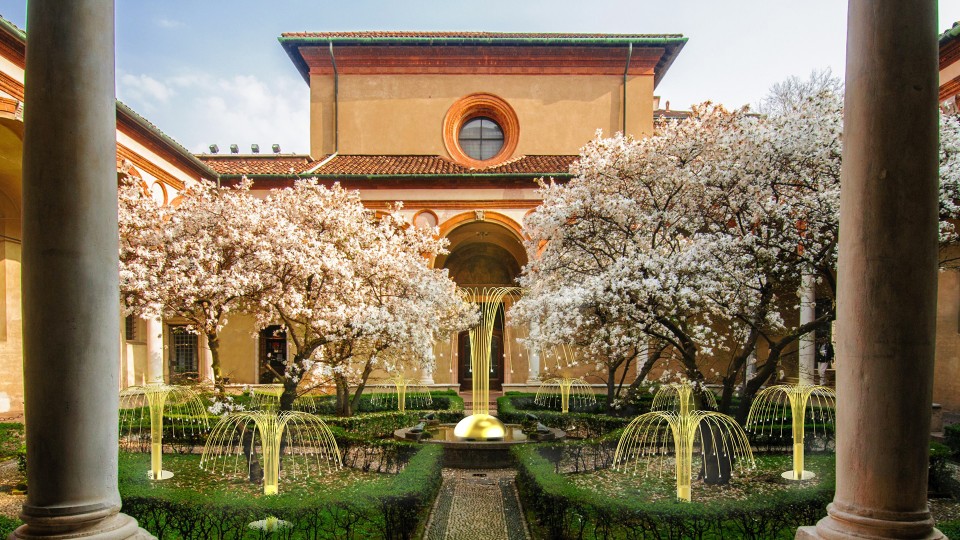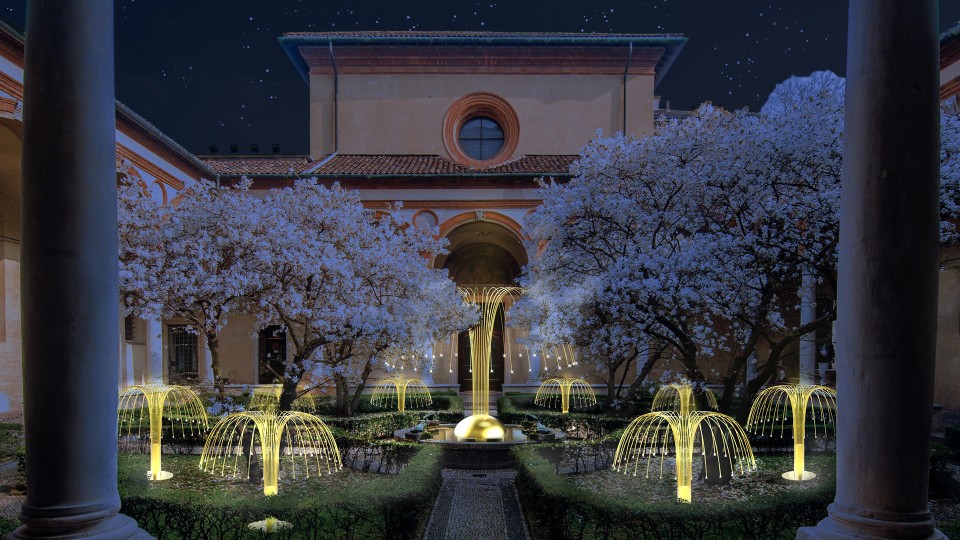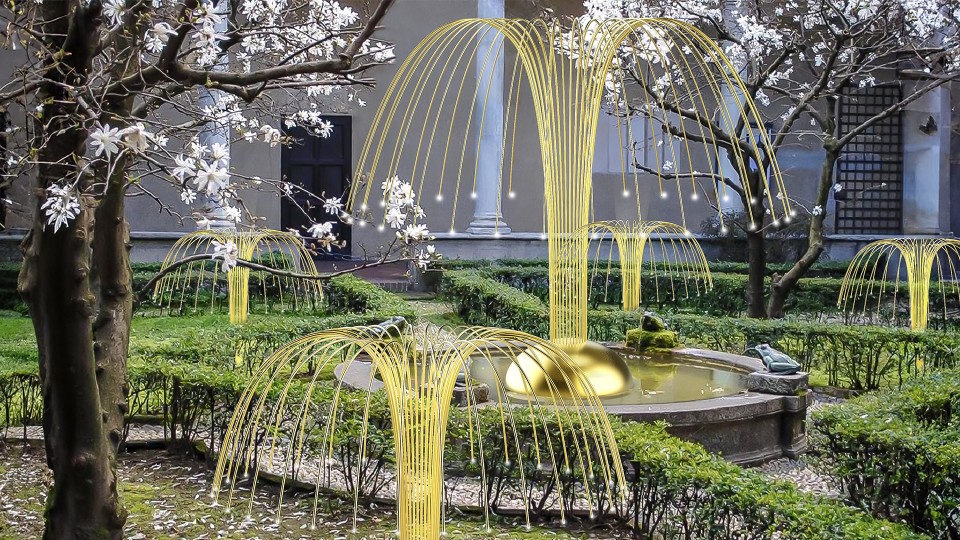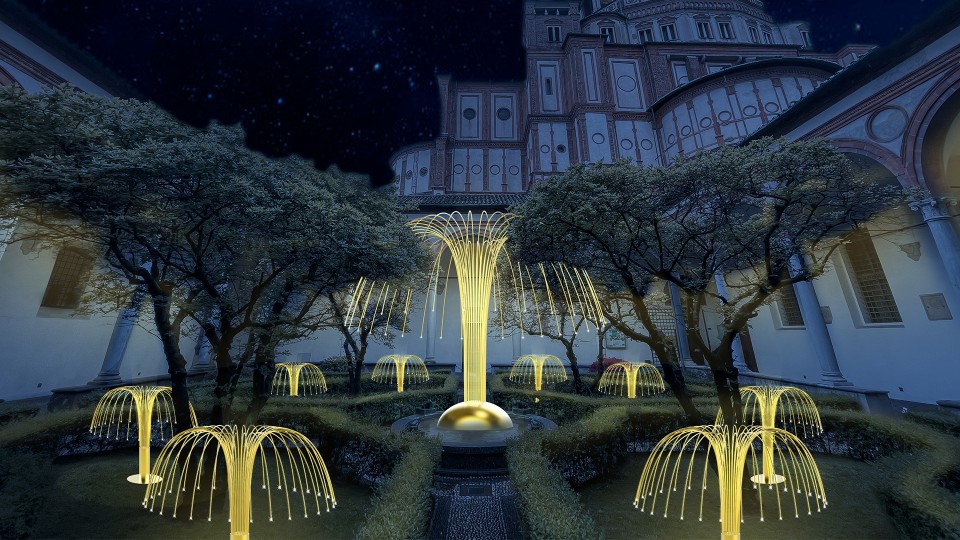You are here: Chiesa di Santa Maria delle Grazie e Cenacolo Vinciano
Art+Design
5vie event
physical event
Info
Chiesa di Santa Maria delle Grazie e Cenacolo Vinciano
Via Giuseppe Antonio Sassi, 3
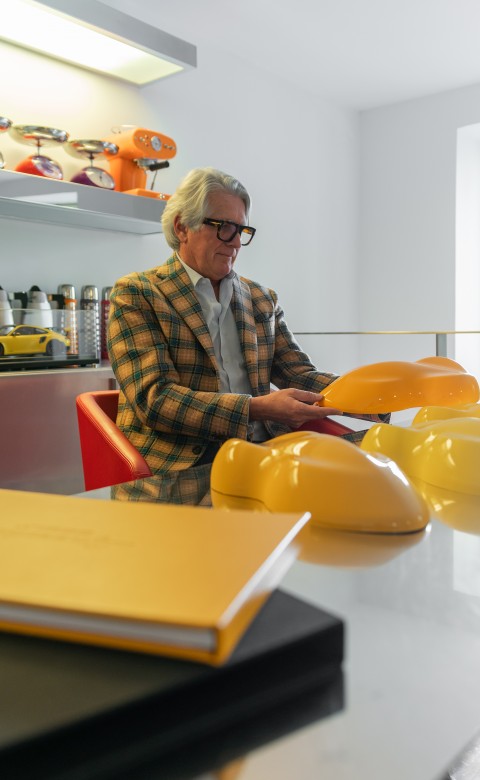
The Graffito of Light installation in the small cloister and sacristy of Santa Maria delle Grazie is a project by Luca Trazzi, created in collaboration with F.A.N. Europe Lighting.
The architect's synthetic gaze has distilled the essence of the Renaissance cloister and sacristy built between 1492 and 1497, attributed to Donato Bramante, into a dialogue with the grand dome. A decorative graffiti etched into the cloister’s plaster—flowers faint yet persistent—became the seed of inspiration for this luminous intervention.
Like the frescoed patterns that once animated these walls, the installation’s lamps take shape: weightless, radial, pulsating with a warm glow. Light moves through the spaces in distinct rhythms—circular along the portico, star-like in the garden, linear toward the apse in the sacristy.
Slender golden anodized aluminum wires spiral around a central stem, terminating in small bursts that echo the floral motif of the graffiti. These standing lamps rise within the four garden beds and the sacristy, their quiet geometry shaping the space. Suspended above the cloister’s vaulted corridors, chandelier-like fixtures offer a diffused, low-intensity light downward—an invitation to nighttime contemplation—while casting a more expansive glow upward, illuminating the arches.
There are twenty-four hanging lamps in the cloister, each with thirty-two spokes; sixteen scattered through the garden; eight in the sacristy. The numbers are deliberate—multiples of eight, an homage to Bramante’s design, where eight stood alongside twelve (the apostles) and four (the evangelists). The number eight, an ancient symbol of rebirth, gestures toward the eighth day, the day of Resurrection, and later, the Immaculate Conception, canonized as dogma in 1854.
The installation follows the same logic that governed the architecture of these Renaissance spaces—an underlying mathematical order, a silent structure of meaning. It recalls the work of Luca Pacioli, the mathematician who dedicated De Divina Proportione to Ludovico il Moro, with illustrations by his friend Leonardo da Vinci. It echoes Bramante's careful balancing of form and faith.
In the daylight, wisdom filters down from above, guiding the circular movements of the Dominican friars in their meditations. By night, the installation takes over—illumination as ritual, shadowplay among columns, tombstones, and the heavy foliage of the magnolias in the cloister, reflections gliding across the inlaid wood of the sacristy’s furnishings, gifts from Ludovico il Moro himself.
At the cloister’s center, a fountain. A miniature Eden. Bronze frogs, silent now, their voices swallowed by thin arcs of water. Rising from the basin, a column of light unfurls like a tree, its glow diffusing outward, merging with the symbolic order of the space. A tree of life, a source of living water, a fountain of light. A visual echo of two Dominican Marian litanies, soft in their cadence: Santa Maria, source of true wisdom. Santa Maria, light of right knowledge.
This luminous heart of the cloister extends into the sacristy, where two rows of standing lamps, aligned and parallel, carve out a path of light.
The installation continues the dialogue between architect Luca Trazzi and Santa Maria delle Grazie. He has already designed the nighttime lighting that reveals the church’s exterior contours, giving them new presence in darkness.
Its defining mark—elegance. A playfulness that never veers into provocation, an emotional resonance that never overwhelms. A careful, respectful interpretation of space, just light, tracing the sacred geometry of the past.

